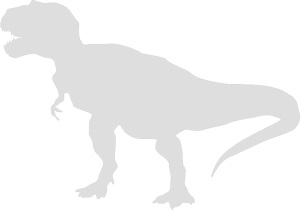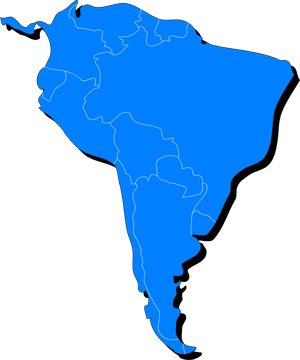Every month, 100,000 readers use the Dinosaur Database, but we receive no support from you. Developing and updating the database requires a lot of work. If you want it to remain open and be updated, please support us via the "Buy us a coffee" button available on every page or via the Support page.
Dinosaur: Vitosaura colozacani

| Length*: | 5.5 m | 18.0 ft |
| Weight*: | 520 kg | 1,146 lb |
*The largest known specimen
Period
Epoch: Late Cretaceous
Stage: Campanian
Years: 83.6–72.1 Ma
Details
Status: valid
Author: Jiménez Velandia et al.
Year: 2025
Distribution
Area: South America
Country: Argentina
Region: La Rioja
Formation: Los Llanos
Description
Vitosaura colozacani
Vitosaura colozacani was a medium-sized abelisaurid theropod dinosaur that lived in what is now La Rioja Province, northwestern Argentina, during the Late Cretaceous period, approximately 83–72 million years ago (Campanian stage). It was discovered in the Los Llanos Formation, a sedimentary deposit known for its fluvial and aeolian facies preserving Gondwanan vertebrates.
The name Vitosaura honors Victoria ‘Doña Vito’ Romero, a 19th-century soldier from the Los Llanos region, combined with Ancient Greek “sauros” (lizard). The species name colozacani references the Colozacán Valley, the type locality.
As a member of Abelisauridae within Ceratosauria, Vitosaura represents a non-brachyrostran or furileusaurian abelisaurid, expanding the record outside Patagonia.
Etymology
The genus name “Vitosaura” derives from Victoria ‘Doña Vito’ Romero, a notable 19th-century soldier from the Los Llanos region, combined with the Ancient Greek “sauros,” meaning “lizard.” The species name “colozacani” refers to the Colozacán Valley, where the holotype was discovered.
Physical Characteristics
Vitosaura colozacani was a typical abelisaurid, estimated at 5.5 m (18 ft) in length. The holotype preserves axial and pelvic elements indicative of a robust build adapted for predation.
Key anatomical features include:
- First dorsal centrum with a deep pneumatic fossa on the lateral surface and a prominent parapophysis.
- Complete second dorsal vertebra with a tall, rectangular neural spine, pre- and postspinal laminae, and a hyposphene-hypantrum complex.
- Partial sacrum with fused centra and robust transverse processes.
- Partial left ilium with a preacetabular process longer than the postacetabular, a deep acetabular notch, and a brevis fossa.
- Left pubis with a straight shaft and expanded distal boot; left ischium with a robust proximal end and twisted shaft.
- Other indeterminate fragments, including possible ribs.
These traits suggest a quadrupedal stance with powerful hindlimbs for locomotion.
Diet and Feeding Habits
As a carnivorous theropod, Vitosaura colozacani preyed on various vertebrates in its arid ecosystem. Its diet likely included:
- Titanosaurian sauropods, as associated remains suggest.
- Smaller dinosaurs, crocodyliforms, and reptiles.
- Opportunistic scavenging in floodplain environments.
It used robust jaws and serrated teeth for tearing flesh.
Habitat and Distribution
Vitosaura colozacani lived in what is now northwestern Argentina, specifically in the Los Llanos Formation of La Rioja Province.
Its environment was characterized by:
- Fluvial channels, aeolian dunes, and ephemeral lakes in a semi-arid landscape.
- Seasonal aridity with periodic flooding.
- Diverse Gondwanan fauna, including titanosaurs.
The Los Llanos Formation yields rare theropod remains outside Patagonia.
Paleoenvironment
The site was a fluvial-aeolian system during the Campanian, with warm, dry conditions and episodic rainfall. The assemblage includes titanosaurs and indeterminate vertebrates, indicating a predator-prey dynamic.
Behavior and Social Structure
No direct evidence, but abelisaurids likely were solitary or small-group hunters. Possible behaviors include:
- Ambush predation in dune-stabilized floodplains.
- Territorial displays using robust skull and limbs.
- Adaptation to arid conditions via energy conservation.
As a non-brachyrostran, it may have retained plesiomorphic hunting strategies.
Discovery and Research
The holotype (CRILAR-Pv 506) was discovered during 2009–2010 fieldwork in the Colozacán Valley near Tama village, La Rioja Province. Described in 2025, it is housed at the Centro Regional de Investigaciones Científicas y Transferencia Tecnológica de La Rioja.
Phylogenetic analyses place it as a basal abelisaurid, related to Indo-Malagasy forms.
Discovery Context
Unearthed in Campanian outcrops associated with titanosaur remains, the partial skeleton dates to ~83–72 million years ago. It confirms abelisaurids in the formation.
Significance and Interesting Facts
- First named theropod from Cretaceous La Rioja Province.
- Expands abelisaurid record outside Patagonia, to northwestern Argentina.
- Associated with titanosaurs, suggesting predation.
- Poorly supported interrelationships highlight abelisaurid evolutionary gaps.
- Honors local historical figure, linking paleontology to regional heritage.
Conclusion
Vitosaura colozacani was a medium-sized abelisaurid from the Late Cretaceous of Argentina, exemplifying Gondwanan theropod diversity beyond Patagonia. Its partial skeleton reveals basal traits, informing abelisaurid biogeography. This 2025 discovery enhances understanding of Campanian ecosystems.
Locations
Sources
Material: First dorsal centrum, second dorsal vertebra, partial sacrum, left ilium, pubis, ischium, other indeterminate elements
References: Jiménez Velandia, H., Ezcurra, M. D., Hechenleitner, E. M., Basilici, G., Martinelli, A. G. & Fiorelli, L. E. 2025. A new Late Cretaceous abelisaurid species from La Rioja Province, northwestern Argentina. Ameghiniana, 62(5): 1–23.



